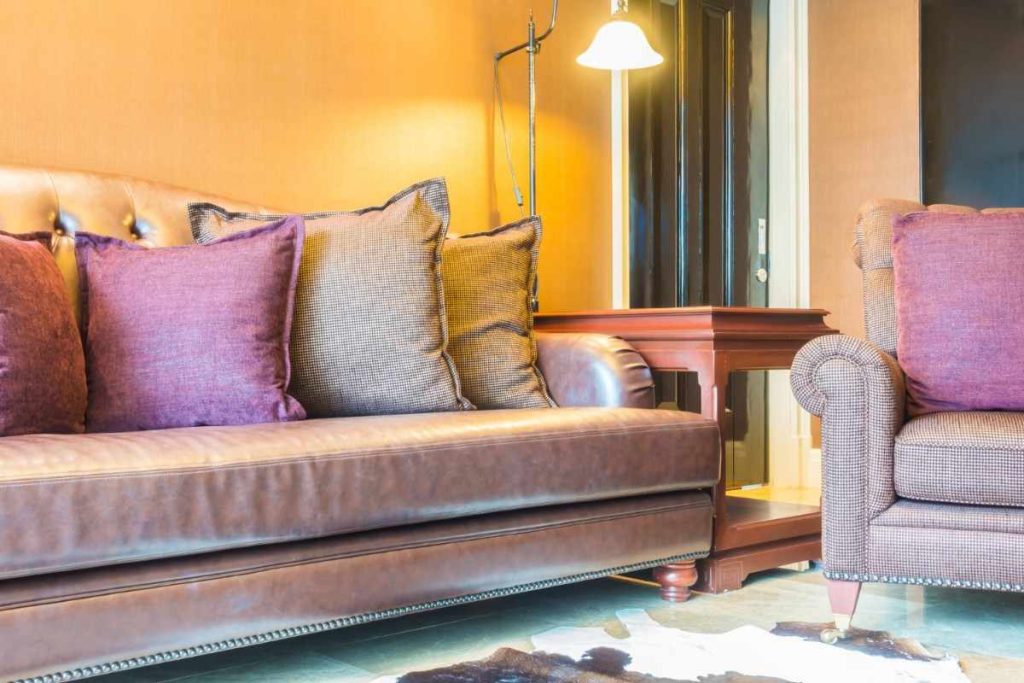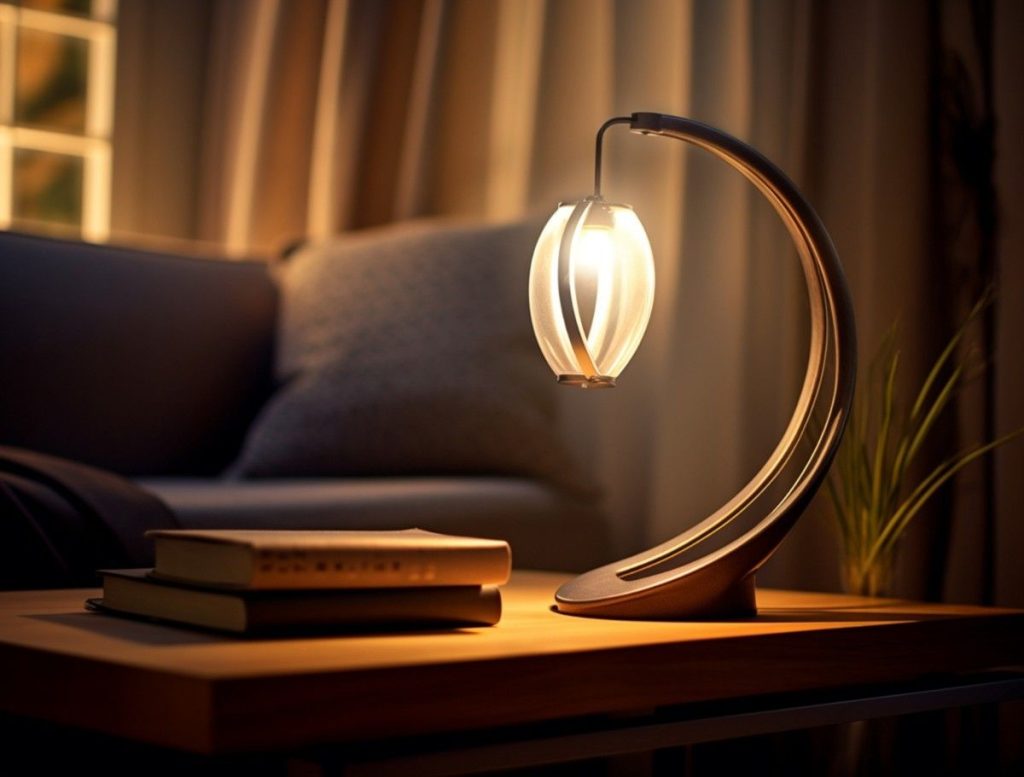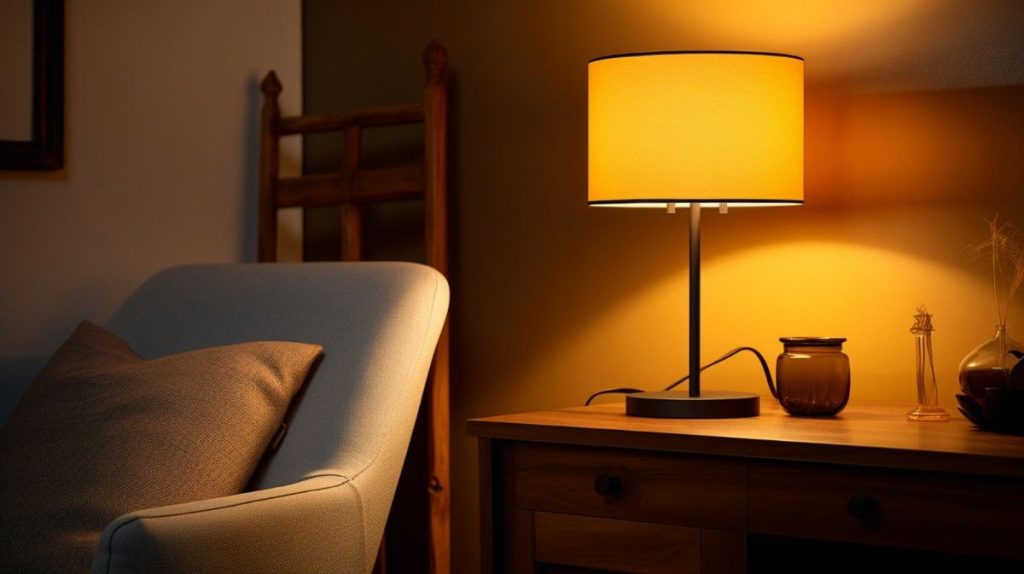Understanding the difference between warm light vs cool light is key to designing a comfortable, visually appealing home. Many homeowners wonder, “What is cool light and warm light?”, especially when choosing lighting for rooms with different moods and functions.
These lighting types don’t just affect how a space looks; they can also influence your comfort, productivity, and even how colours and décor appear. By learning how each temperature works, you can create the perfect balance throughout your home and ensure every room looks its best.

If you’ve ever wondered what is warm light, it’s the soft, yellowish glow typically associated with sunsets, candles, or cosy evening lighting. It usually falls between 2700K–3000K on the colour temperature scale.
If you are still thinking, “What is warm white light?”, think of lighting that creates a soothing, welcoming atmosphere. This is why warm light is often preferred in living rooms, bedrooms, and lounge spaces where relaxation is the main priority.
The benefits of warm white light include:
Warm lighting not only improves your visual comfort but also elevates the overall mood and aesthetic of your home.
To understand what is cool light, imagine a bright, crisp tone that resembles natural daylight. Cool lighting typically ranges from 4000K to 6500K and is perfect for areas where clarity and focus are essential. When exploring what is cool white light, think of a bluish-white glow that enhances visibility and highlights modern décor elements.
Cool light is ideal for kitchens, bathrooms, study rooms, and other task-oriented spaces. It increases alertness and helps you stay productive, which is why many workplaces rely on cool lighting. In home interiors, cool white light also elevates minimalistic and contemporary designs by making surfaces appear cleaner and sharper.
Understanding the warm and cool light difference helps you pick the right lighting for each room. Warm light has a soft, yellowish tone that creates a cosy, relaxing feel, while cool light has a bright, bluish tone that boosts alertness and improves visibility. Warm lighting enhances natural materials and traditional décor, whereas cool lighting suits modern interiors and task-heavy spaces.
Some of the key differences between warm light vs cool light are:
| Feature | Warm Light | Cool Light |
|---|---|---|
| Colour Temperature | 2700K–3000K | 4000K–6500K |
| Visual Tone | Yellowish, soft | Bright, bluish |
| Mood | Calm, cosy | Energising, focused |
| Best Use | Living rooms, bedrooms | Kitchens, bathrooms, workspaces |
| Decor fit | Wooden, rustic | Modern, minimal |
This quick comparison shows how each lighting type serves a different purpose, helping you choose the right tone for every room.

Lighting can transform the entire feel of your home, which is why warm light home decor is popular among homeowners who want their spaces to feel inviting. Using warm white light makes textures appear softer and highlights natural materials such as wood, stone, and woven fabrics. Incorporating hanging lights with warm tones can further elevate the ambience by adding both style and gentle illumination, creating a cosy, welcoming environment.
On the other hand, cool lighting can accentuate glossy surfaces, metallic finishes, and minimalistic décor. While warm light adds emotional comfort, cool light adds clarity and sharpness. Strategically, blending both can be particularly effective, especially by pairing cool task lights with warm hanging lights, which helps highlight architectural features, enhance artworks, and create balance in modern homes.
Choosing the right lighting depends on how each room is used. The decision between warm white light vs cool white light varies based on function, décor, and desired ambience. Understanding how to select the right lighting fixtures for various spaces plays a crucial role in achieving the perfect look and comfort level. Below are room-wise recommendations to help you choose the ideal lighting tone.
The living room is where families relax, entertain, and spend most of their time together. This is why choosing the right lighting is essential. Using warm light in this space helps create a soothing environment that feels comfortable and welcoming throughout the day.
When layered properly, warm light can transform your living room into a space that feels inviting and emotionally comforting, making every gathering more enjoyable.

Your bedroom is your personal retreat, a place to unwind and recharge. Using warm lights for room settings is one of the easiest ways to promote relaxation and prepare your mind for sleep.
By choosing warm lighting, you create a peaceful environment that supports healthy sleep and enhances the comfort of your bedroom.

The kitchen is a functional space where clarity and accuracy matter. Good lighting helps you cook, clean, and organise more effectively. This is why cool white light is often preferred.
Choosing cool white lighting ensures your kitchen remains bright, practical, and efficient, especially during everyday tasks.
Bathrooms need lighting that is bright, clean, and reliable. Using cool lights ensures that grooming tasks can be done with accuracy and proper visibility.
By opting for cool lighting in the bathroom, you create a space that feels fresh, energising, and functionally superior.
A productive home office requires lighting that boosts focus and reduces fatigue. The balance between warm and cool tones is key to achieving the right workspace feel.
A balanced lighting setup ensures your home office remains both comfortable and efficient, helping you stay focused throughout the day.

Hallways and entryways are transitional areas that influence your home’s first impression. Lighting in these spaces should guide movement while enhancing the overall aesthetic.
With the right lighting choices, your hallways and entryways can feel both welcoming and functional, enhancing your home’s overall flow and charm.
Choosing between warm and cool lighting depends on how you want your space to feel and function. Each lighting type influences mood, visibility, and overall ambience differently.
By understanding how each lighting type affects your space, you can choose the perfect combination that suits your home’s needs, mood preferences, and interior style.
Choosing between warm light vs cool light depends on the mood and functionality you want each room to offer. Warm lighting creates a cosy, relaxing ambience, while cool lighting enhances clarity for tasks. If you’re wondering how to get warm light from LED, selecting LEDs designed for soft, warm tones will give you the desired effect. The warm white light advantages also make it ideal for bedrooms and living areas. In real estate, developers like Confident Group focus heavily on thoughtful lighting to elevate comfort and interior appeal. By blending both tones, you can create a balanced, inviting, and visually pleasing home.
1. Which is better, warm light or cool light?
Both have their uses: warm for relaxation, cool for activities requiring focus.
2. Which light is good for eyes, warm or cool?
Warm light is generally gentler on the eyes for evening use.
3. Is LED light warm or cool?
LED lights come in both warm and cool variants, depending on their colour temperature rating.
4. What’s the difference between warm light and cool light?
Warm light has a yellow tone, while cool light has a brighter, bluish tone.
5. Which light is best for sleeping?
Warm light is ideal because it promotes relaxation and supports healthy sleep patterns.

Imagine you’ve spotted a property that makes your heart skip a beat. How do you convey to the seller that you’re serious without jumping straight into a contract? That’s where an Expre...

What is Property Registration and Why It Matters Buying a home or a piece of land is a milestone you would cherish for a lifetime. However, merely paying for it does not make you its lega...
Comments